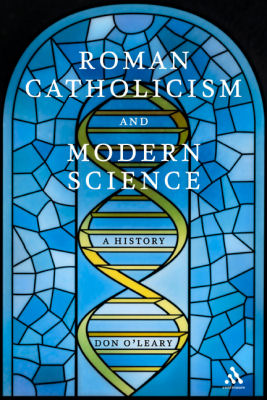
|
Posted October 7, 2010
Book: Roman Catholicism and Modern Science: A History Author: Don O’Leary Continuum Books. New York. 2007. Pp. 356 An Excerpt from the Introduction:
An Excerpt form the Book: In June 1966 Pope Paul received a report representing the dominant view among the members, advising that it was morally permissible for married couples to use artificial means of contraception. After agonizing over the issue for two years, he decided effectively to reject the advice of his commission by accepting a minority view which advocated an adherence to the traditional position of the church. Cardinal Alfredo Ottaviani, secretary of the Holy Office, played a central role in influencing the pope to reach his decision. Karol Wojtyla, archbishop of Krakow and the future Pope John Paul II, also played a key role. Artificial contraception was not accepted as a morally appropriate alternative to the rhythm method. On 25 July 1968 Paul issued the encyclical Humanae Vitae. He wrote about the regulation of the human birth rate against a background of rapid population growth. He noted humanity’s “stupendous progress” in regulating nature, which included the human mind and body. His intention was to speak authoritatively on the Catholic principles governing marriage, sexuality, and reproduction. The Roman Catholic Church was entrusted by Jesus Christ with the task of being guardian and interpreter of the entire moral law, which included not only the law of the gospel but also the “natural law.” Paul asserted that the natural law, illuminated by divine revelation, “declares the will of God, and its faithful observance is necessary for men’s eternal salvation.” He did not give any latitude for freedom of conscience when he proclaimed: “Let no Catholic be heard to assert that the interpretation of the natural moral law is outside the competence of the Church’s Magisterium. It is in fact indisputable.” Catholic doctrine dictated that there was a compelling connection, established by God, between the love-giving (unitive) and life-giving (procreative) aspects of sexual intercourse between husband and wife; that is, there could be no separation between the sexual and reproductive aspects of the marriage act. On the basis of natural law, sexual activity in marriage was not to be subjected to an impairment of its natural potential to procreate human life. Abortion and artificial means of contraception were condemned as immoral methods of birth control. Marital sexual intercourse, when it was “deliberately contraceptive,” was deemed to be “intrinsically wrong.” Catholic couples were, however, permitted to exercise birth control by taking advantage of the infertile days of the menstrual cycle because they could “rightly use a facility provided them by nature,” as distinct from “means which directly exclude conception” and “obstruct the natural development of the generative process. It made no difference that in both cases married couples clearly intended to avoid having children and had good reasons for doing so. Table of Contents: 1. From Galileo to Darwin 2. Religion and science in Victorian Britain 3. A Church under siege 4. Defensive strategies 5. The suppression of the Mivartian Hypothesis 6. Antimodernism 7. Catholicism and science in the interwar years 8. Pope Pius XII and the new theology 9. Science, faith, and the Second Vatican Council 10. Pope John Paul II’s philosophy of science and faith 11. Bioethics 12. Reflections |
|
